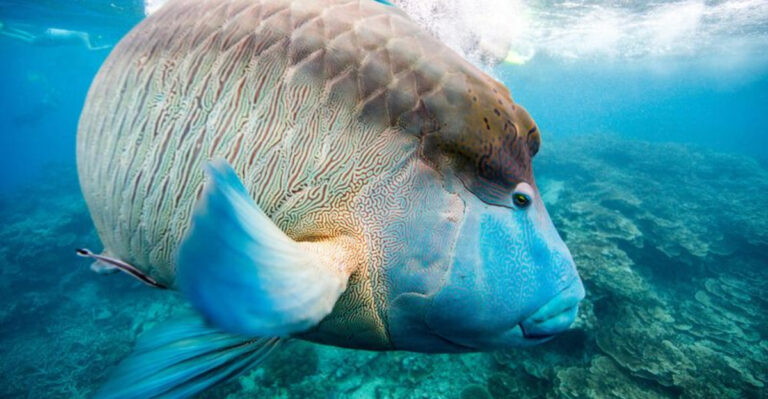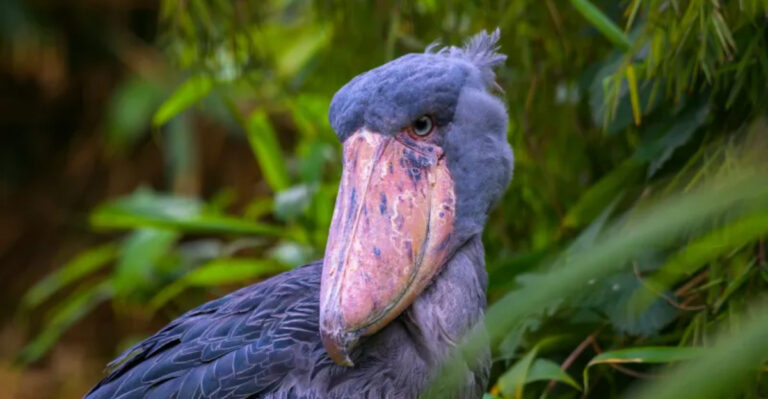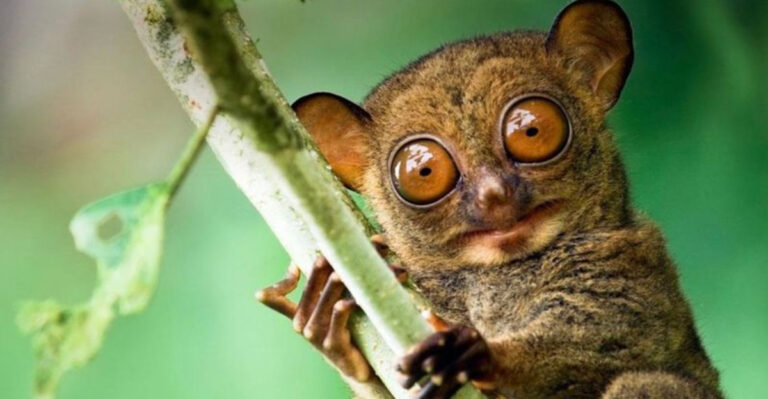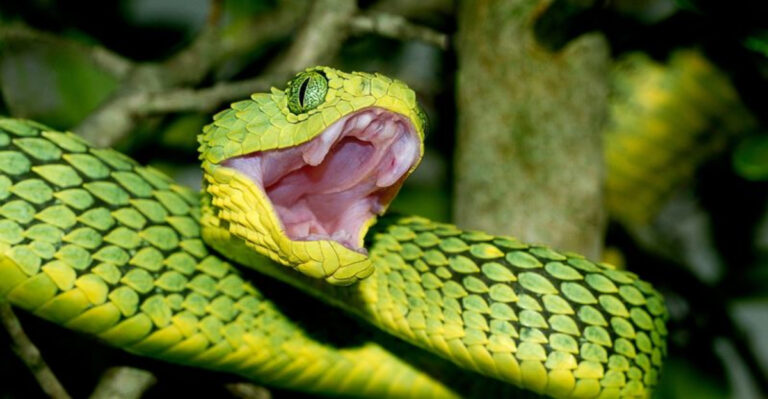Incredible Rattlesnake Facts
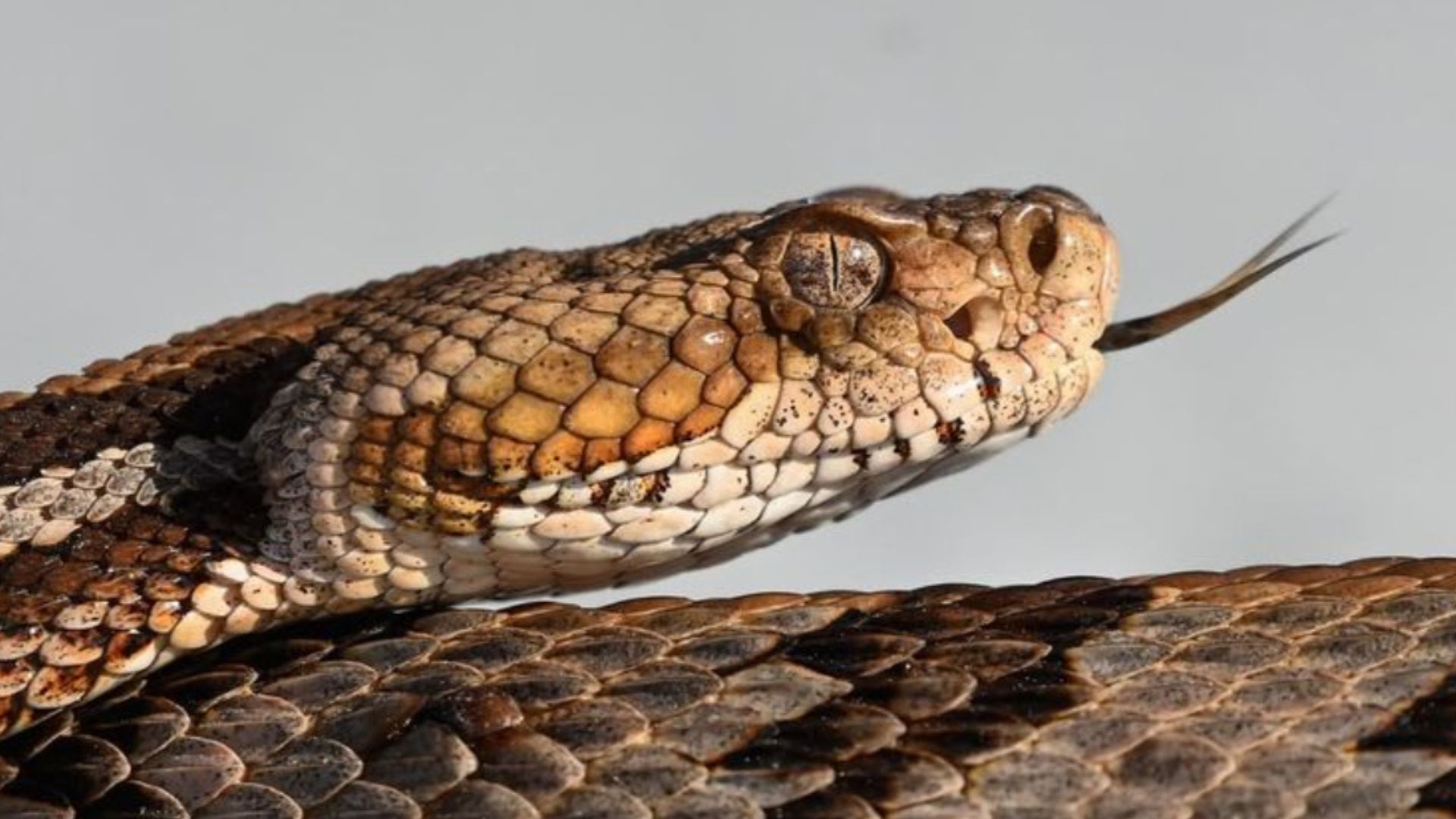
Rattlesnakes are fascinating creatures that captivate the imagination with their distinct appearance and intriguing behaviors. Known for their iconic rattle, these snakes are a staple of North American wildlife.
They are not only important to the ecosystem but are also a subject of endless curiosity. From their unique anatomy to their survival tactics, each fact reveals a different facet of these remarkable reptiles.
Prepare to be amazed as we unravel the mysteries of rattlesnakes, blending science with a touch of humor to make learning fun!
1. Rattle Mechanism
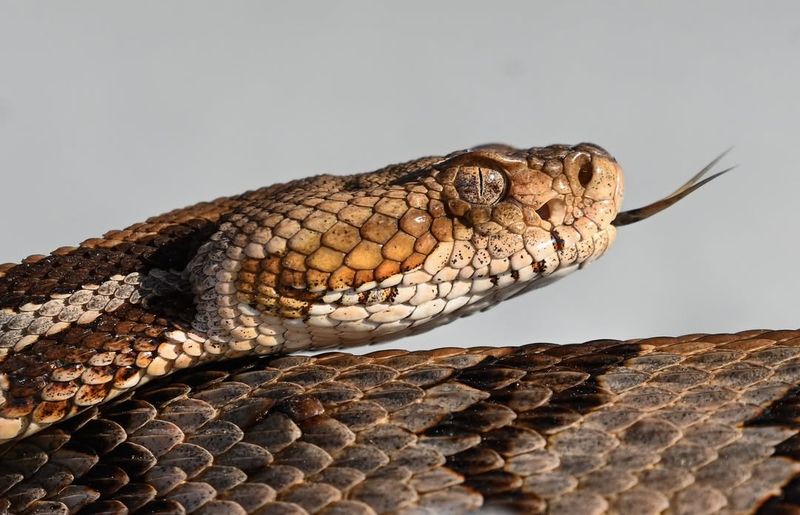
Rattlesnakes have a fascinating rattle at the end of their tails, made up of interlocking segments. Each time they shed their skin, a new segment is added. This natural maraca is used to warn potential threats, producing a sound that is both distinctive and intimidating. Interestingly, the number of segments doesn’t indicate the snake’s age, as they can lose segments over time.
While a rattlesnake’s rattle might not reveal its age, it certainly makes a bold auditory statement. The rattle’s sound is produced by the rapid shaking of these segments, which are made of keratin, the same material found in human nails. The speed at which they can shake their tails is truly remarkable, reaching up to 60 rattles per second.
It’s like a built-in percussion instrument that serves as both a defense mechanism and a communication tool. Whether alerting predators or warning humans to keep their distance, the rattle is an essential feature of these impressive snakes.
2. Heat-Sensing Pit Organs
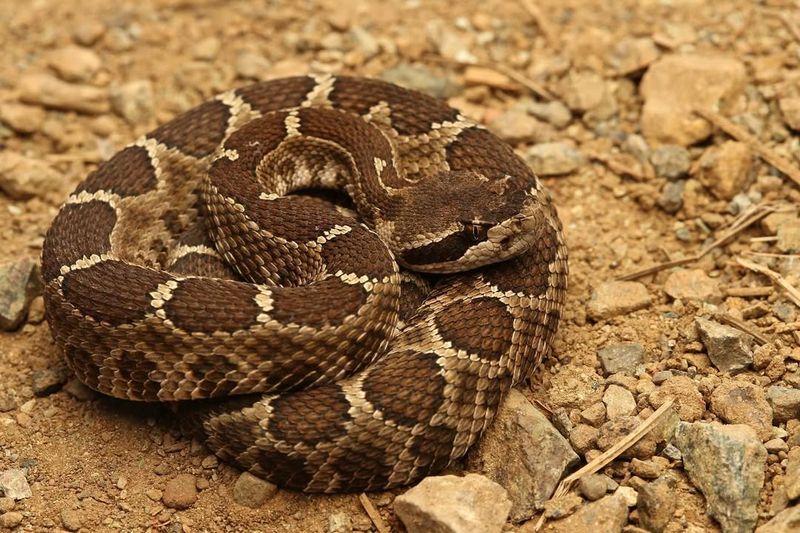
Rattlesnakes possess specialized heat-sensing pit organs located between their eyes and nostrils. These infrared detectors allow them to sense the body heat of their prey, even in total darkness. It’s like having night vision goggles built into their heads. This adaptation makes them highly effective hunters, especially for warm-blooded prey such as rodents.
The ability to “see” heat gives rattlesnakes a significant advantage in tracking and striking their targets with precision. This unique sensory adaptation is a prime example of nature’s ingenuity, allowing rattlesnakes to thrive in varied environments. Whether in the desert or the forest, these pit organs help them navigate their surroundings and find food efficiently.
It’s a testament to their evolutionary success that they possess such advanced hunting capabilities. So next time you encounter a rattlesnake, remember, it might just be “seeing” you in a whole new way!
3. Venom Composition
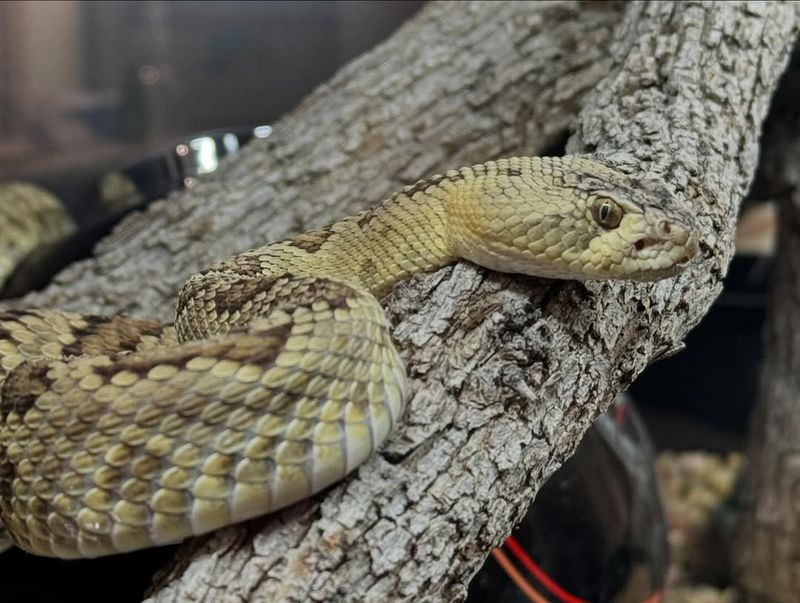
Their venom is a complex cocktail of proteins and enzymes, designed to immobilize prey and aid in digestion. It’s a concoction that packs a punch, with some species having venom potent enough to harm humans. However, the venom’s primary purpose is to subdue small animals.
The components of rattlesnake venom vary among species, with some having more neurotoxic effects while others are hemotoxic. This variation allows rattlesnakes to adapt to different prey and habitats. Interestingly, young rattlesnakes tend to have more potent venom than adults, making them surprisingly dangerous despite their size.
The venom also serves as a defense mechanism, deterring predators and perceived threats. Scientists study rattlesnake venom to develop antivenom and explore potential medical applications. It’s a field rich with possibilities, as the unique properties of venom may hold the key to new treatments.
4. Shedding Skin
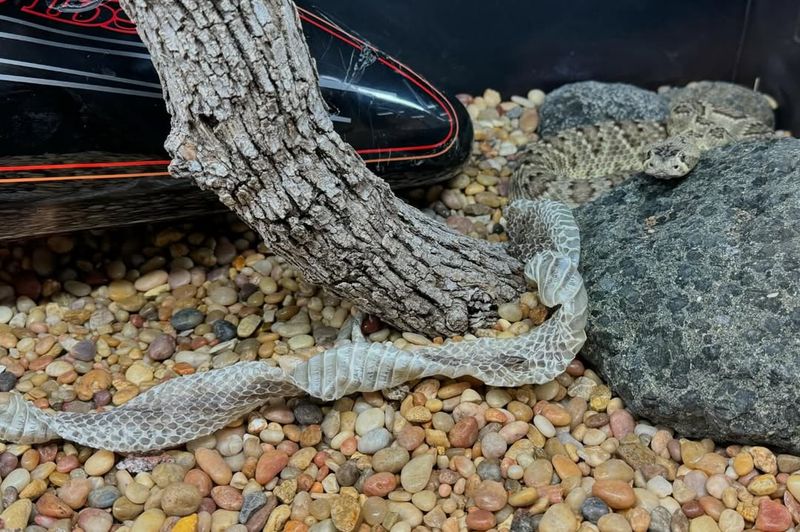
Their shedding allows them to grow and remove parasites, keeping their scales in top condition. The frequency of shedding depends on factors such as age, diet, and environmental conditions. Younger snakes shed more often than adults, as they are growing at a faster rate.
The process begins with the loosening of the outer layer of skin, which eventually peels away, revealing a fresh, vibrant layer beneath. It’s a bit like getting a brand-new outfit every few months. Shedding also plays a role in the health and well-being of rattlesnakes, as it helps them maintain their camouflage and sensory capabilities. The old skin often comes off in one piece, leaving behind a ghostly replica of the snake.
This natural cycle of renewal is both fascinating and crucial for their survival, allowing them to adapt and thrive in their environment. So, when a rattlesnake sheds its skin, it’s not just a makeover; it’s an essential part of its life cycle.
5. Rattlesnake Lifespan
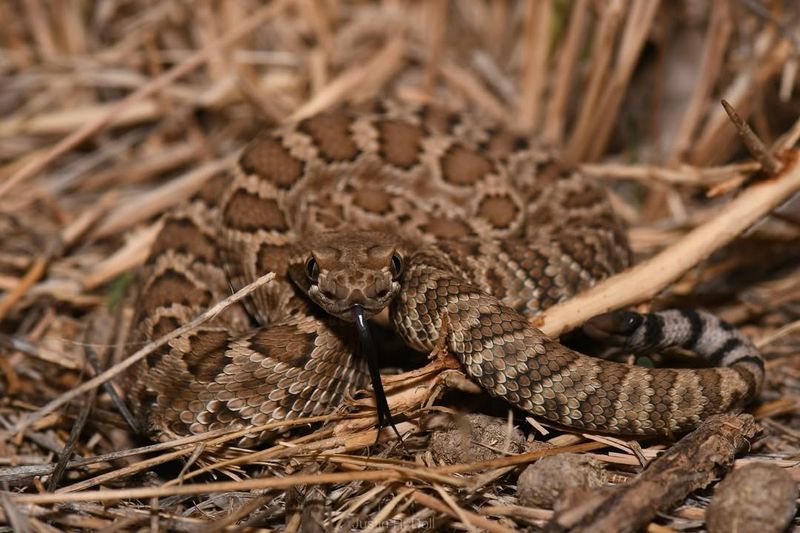
Rattlesnakes have a lifespan that can reach up to 20 years in the wild, depending on the species and environmental factors. They lead solitary lives, often occupying territories that they defend from other rattlesnakes. These reptiles are masters of survival, with a range of adaptations that help them thrive in various habitats. They are known for their ability to conserve energy, which contributes to their longevity.
Rattlesnakes spend much of their time in a state of inactivity, only becoming active when hunting or mating. This energy-efficient lifestyle allows them to survive in harsh conditions where food may be scarce. Their diet primarily consists of small mammals, birds, and reptiles, providing them with the necessary nutrients to sustain their long lives.
The social structure of rattlesnakes is relatively simple, with minimal interaction between individuals outside of mating season. This independence is a key factor in their ability to live long and successful lives in the wild. Understanding their lifespan offers insight into their resilience and adaptability.
6. Camouflage Skills
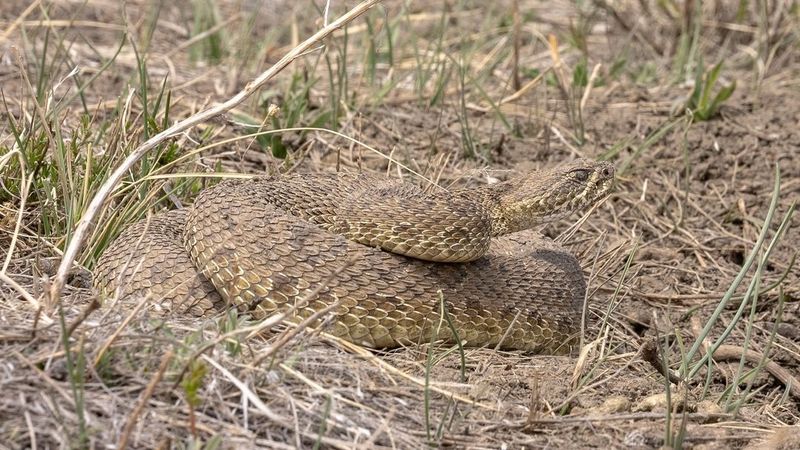
This skill is essential for both hunting and avoiding predators. Their ability to disappear into the landscape is a testament to nature’s artistry. Each species of rattlesnake has a unique pattern that matches its specific habitat, whether it’s the sandy desert or the leafy forest floor. This natural disguise allows them to ambush prey with ease, lying in wait until the perfect moment to strike.
Camouflage also plays a crucial role in their defense strategy, as it helps them avoid detection by larger predators. The art of staying hidden is a vital skill for these reptiles, ensuring their survival in the wild. This incredible ability to blend in is not just about appearance; it’s a sophisticated survival tactic honed over millions of years.
Rattlesnakes demonstrate that sometimes the best defense is simply not being seen, proving that stealth can be just as effective as speed or strength.
7. Rattlesnake Reproduction
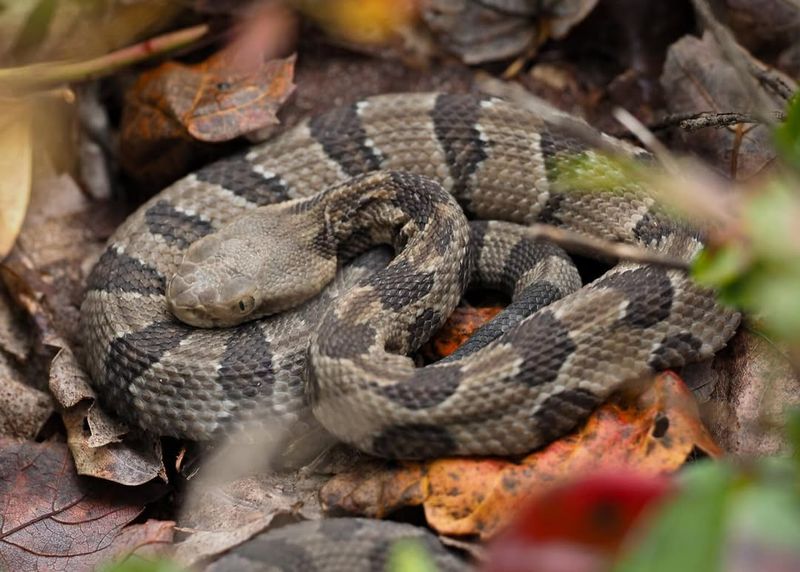
Female rattlesnakes give birth to live young after a gestation period that can last several months. The number of offspring varies, but a typical litter consists of 5 to 20 young snakes. These young rattlesnakes are born fully equipped with venom and miniature rattles, ready to face the world. The newborns are independent from birth, receiving no parental care, which is common among reptiles.
This independence requires them to rely on their instincts from the very beginning, a testament to their survival skills. The mating season for rattlesnakes usually occurs in the spring or early summer, with males often competing for the attention of females.
This competition can lead to fascinating displays of strength and agility, as males engage in elaborate dances to win over potential mates. Rattlesnake reproduction is a complex and captivating aspect of their biology, highlighting their unique place in the animal kingdom.
8. Diet And Hunting Techniques
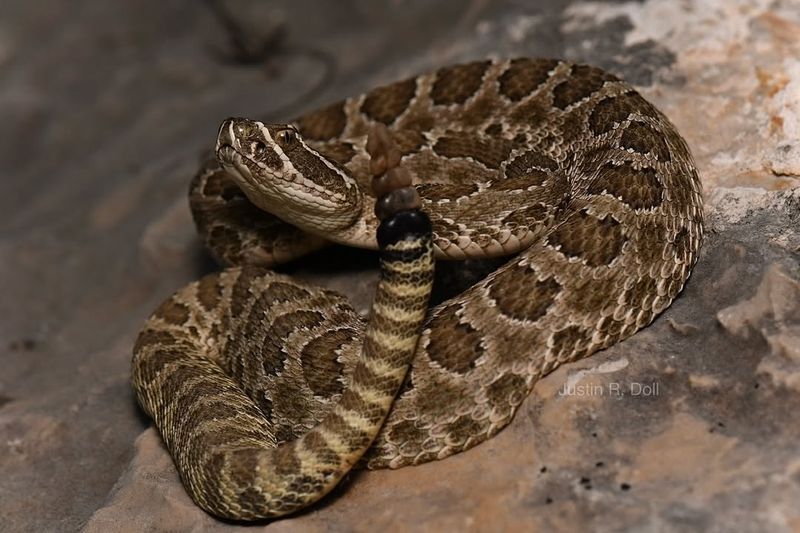
They employ a sit-and-wait strategy, using their camouflage skills to ambush unsuspecting prey. Their hunting technique relies heavily on their heat-sensing pit organs, which enable them to detect warm-blooded animals even in complete darkness. Once they identify a target, rattlesnakes strike with incredible speed and precision, injecting venom through their hollow fangs.
This venom immobilizes the prey, making it easier for the snake to consume. Rattlesnakes swallow their prey whole, thanks to their highly flexible jaws that can expand significantly. This ability to consume large meals allows them to survive for extended periods without food. Their hunting methods are a perfect blend of patience, stealth, and power, showcasing their prowess as top predators in their ecosystems.
The art of rattlesnake hunting is a dance of nature, where timing and precision are key. These remarkable reptiles demonstrate that sometimes, the most effective hunters are those who know how to wait.
9. Rattlesnake Habitats
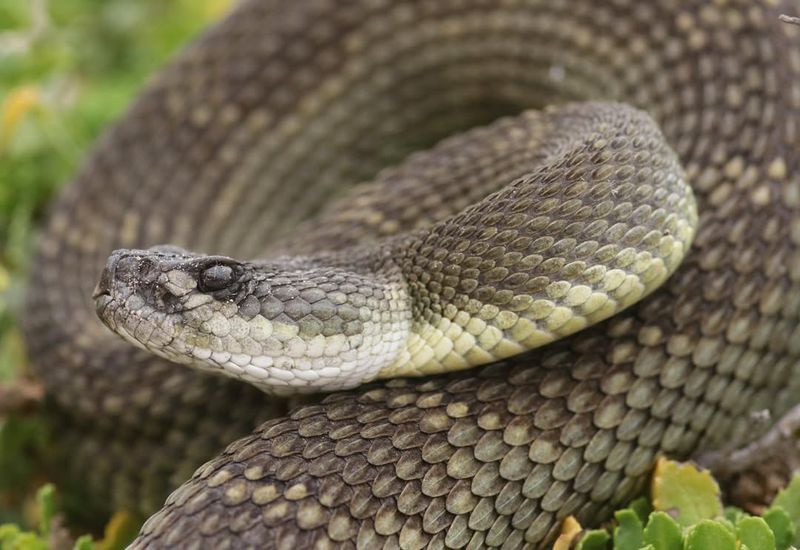
Their adaptability allows them to thrive in various climates and terrains. These habitats provide the necessary resources for their survival, such as food, shelter, and suitable temperatures. Rattlesnakes are often found in areas with abundant cover, like rocks, logs, and shrubs, which offer protection from predators and extreme weather.
Their choice of habitat is closely linked to their camouflage abilities, as they need to blend in seamlessly with their surroundings. This connection between habitat and appearance is crucial for both hunting and defense. Rattlesnakes are also known to occupy burrows and crevices, offering them a safe haven from potential threats.
Their presence in different ecosystems highlights their role as both predator and prey, contributing to the ecological balance. Understanding the habitats of rattlesnakes offers insight into their behavior and survival strategies, revealing the complexity of their interactions with the environment.
10. Temperature Regulation
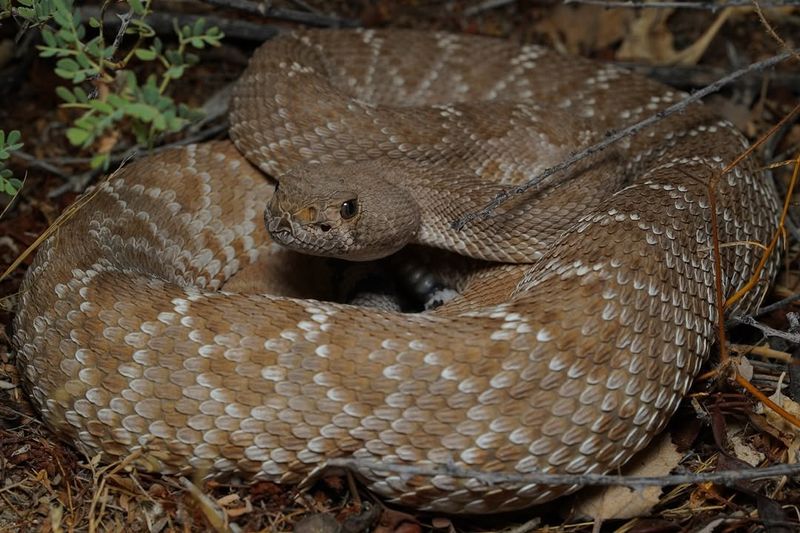
Rattlesnakes are ectothermic animals, meaning they rely on external sources to regulate their body temperature. This characteristic is common among reptiles, and it plays a significant role in their daily activities. To maintain optimal body temperature, rattlesnakes bask in the sun during cooler parts of the day and seek shade or burrows when temperatures rise.
This behavior helps them regulate their metabolism, ensuring they have enough energy for hunting, digestion, and reproduction. Temperature regulation is also crucial for their survival, as extreme temperatures can be harmful or even fatal.
Rattlesnakes are adept at finding microhabitats that offer the right thermal conditions, demonstrating their keen sense of environmental awareness. This ability to adapt to changing temperatures is a key factor in their success across diverse habitats.
The dance between sun and shade is a daily routine for rattlesnakes, showcasing their adaptability and resilience. It’s a reminder that in the world of reptiles, staying cool is just as important as staying warm.
11. Rattlesnake Predators
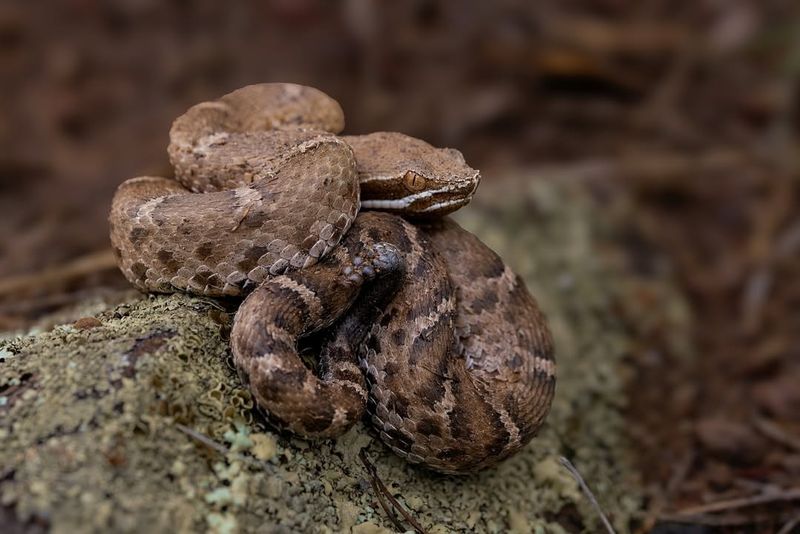
Despite their fearsome reputation, rattlesnakes have several natural predators that pose a threat to their survival. Birds of prey, such as hawks and eagles, are among the most common threats, often swooping down to snatch up these reptiles. Mammals like foxes, coyotes, and even wild pigs also prey on rattlesnakes, taking advantage of their moments of vulnerability.
Interestingly, some snakes, such as kingsnakes, are immune to rattlesnake venom and will actively hunt them. These predators play an essential role in controlling rattlesnake populations, maintaining the balance in their ecosystems. Rattlesnakes employ various defense strategies to evade predators, including their iconic rattle, camouflage, and swift strikes. Their ability to sense danger and react quickly is crucial for their survival.
Understanding the dynamics between rattlesnakes and their predators offers insight into the complex web of interactions within nature. It’s a reminder that even the most formidable creatures can be part of a larger circle of life, where every role is interconnected.
12. Rattlesnake Conservation
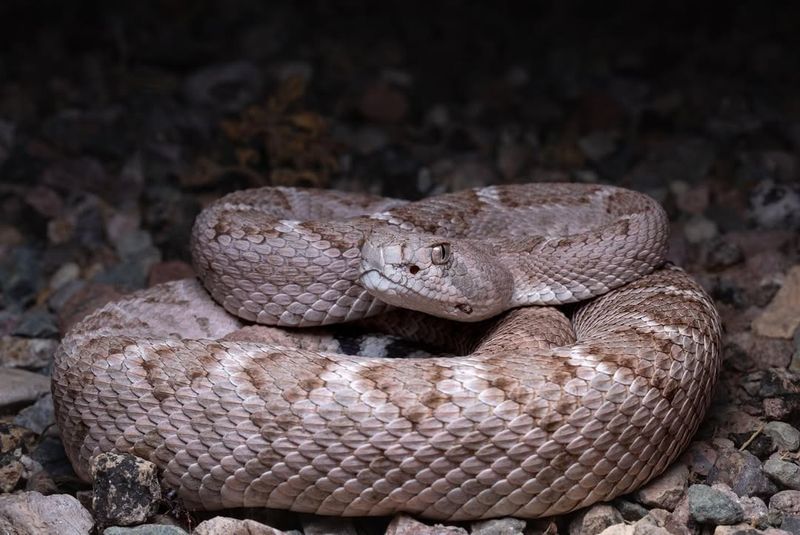
Rattlesnake conservation is a topic of growing importance as habitat loss and human activities threaten their populations. These reptiles play a vital role in controlling rodent populations and maintaining ecological balance. Conservation efforts focus on preserving their natural habitats and educating the public about their importance.
Organizations and researchers work tirelessly to study rattlesnakes, monitor their populations, and develop strategies to protect them. Public awareness campaigns aim to change perceptions, highlighting the benefits these snakes bring to ecosystems. Encouraging coexistence and understanding is key to successful conservation. Rattlesnakes are a crucial part of biodiversity, and their preservation reflects a commitment to environmental stewardship.
By protecting these remarkable reptiles, we also safeguard the health and diversity of the ecosystems they inhabit. Conservation is not just about saving a species; it’s about ensuring a future where nature’s intricate tapestry remains intact and thriving.
13. Rattlesnake Myths And Misconceptions
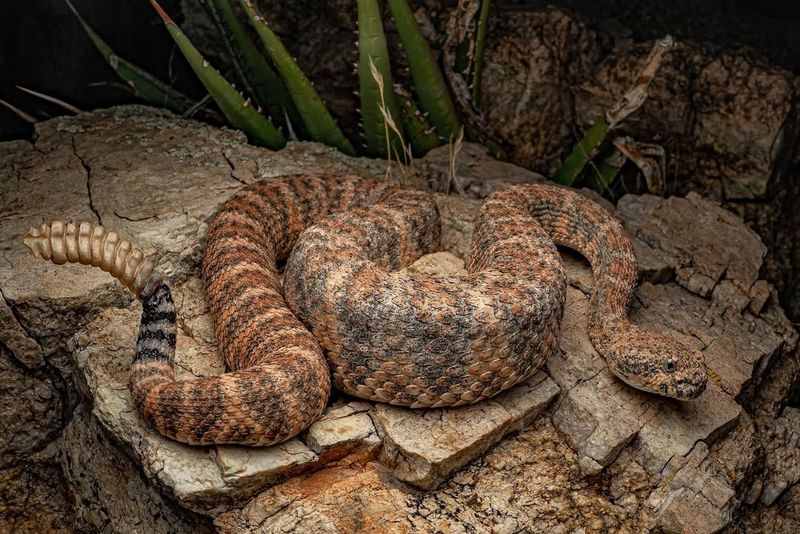
One common myth is that rattlesnakes always rattle before striking, but in reality, they may choose to strike silently if they feel threatened. Another misconception is that rattlesnakes are aggressive towards humans, when in fact, they prefer to avoid encounters.
Many people believe that rattlesnakes can jump long distances to attack, yet their strike range is actually limited to about half their body length. These misunderstandings contribute to fear and negative attitudes towards these reptiles.
Education and awareness are essential in dispelling myths and promoting coexistence. Understanding rattlesnake behavior helps reduce unnecessary fear and encourages respect for their role in the ecosystem.
By debunking myths, we can foster a more harmonious relationship with these fascinating creatures. It’s important to remember that rattlesnakes are not the villains they are often portrayed to be. They are simply animals trying to survive in a world full of challenges.
14. Rattlesnake Cultural Significance
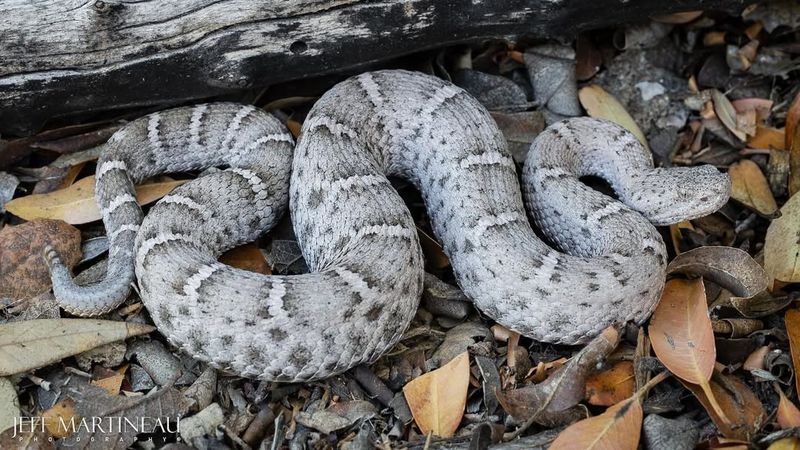
Rattlesnakes hold significant cultural meaning in various societies, particularly among Native American tribes. They often symbolize power, transformation, and healing. Many tribes regard the rattlesnake as a protector and a figure of wisdom. Rattlesnakes appear in folklore and art, reflecting their revered status and the respect they command. In some cultures, rattlesnake imagery is used in rituals and ceremonies, acknowledging their spiritual significance.
The rattle itself is sometimes used in traditional music and dance, symbolizing the connection between the physical and spiritual worlds. This cultural reverence highlights the deep relationship between humans and nature, where animals are seen as teachers and guides. Understanding the cultural significance of rattlesnakes offers a different perspective on these reptiles, viewing them not just as creatures of the wild but as symbols of resilience and strength.
Recognizing their place in cultural narratives enriches our appreciation of their role in both nature and human history, celebrating the enduring connection between people and these enigmatic creatures.
15. Rattlesnake Antivenom Research
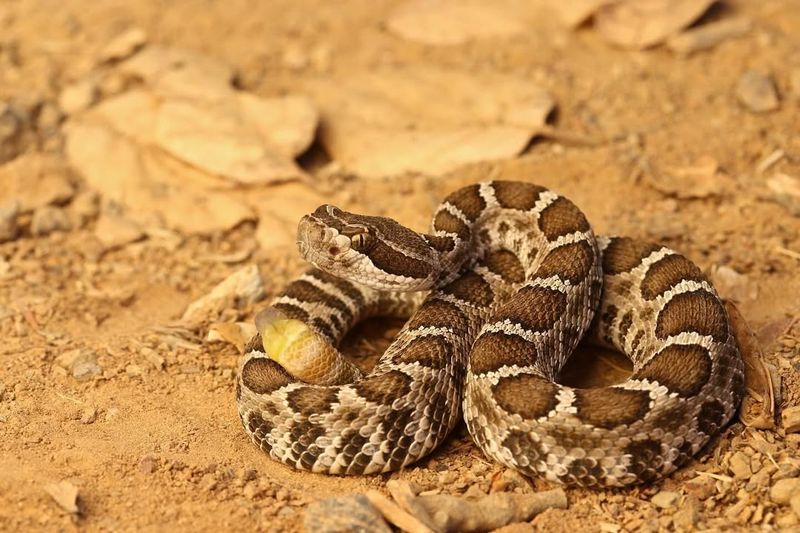
Antivenom research is a vital field of study that focuses on developing treatments for rattlesnake bites. These bites, while rarely fatal with prompt medical attention, require specific antivenom to neutralize the effects of the venom. Scientists work tirelessly to study the venom’s composition and create effective antivenoms. This research not only saves lives but also contributes to our understanding of venom’s potential medical applications.
Some components of rattlesnake venom show promise in treating conditions like cancer and blood clots. The process of creating antivenom involves extracting venom from snakes, analyzing its properties, and developing antibodies. Collaboration between scientists, medical professionals, and conservationists is essential in this field, ensuring the availability of antivenom and promoting awareness about snakebite prevention.
Antivenom research reflects the intersection of science, medicine, and conservation, highlighting the importance of understanding and protecting rattlesnakes. By studying these remarkable reptiles, we not only safeguard human health but also uncover new possibilities for medical advancements.


